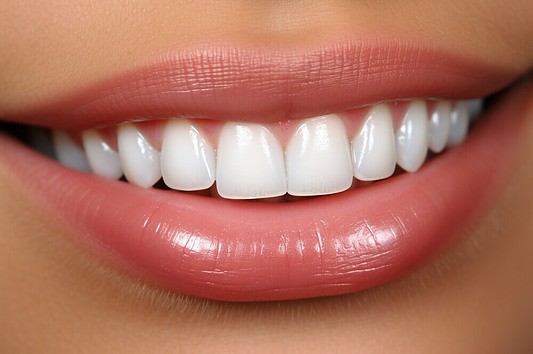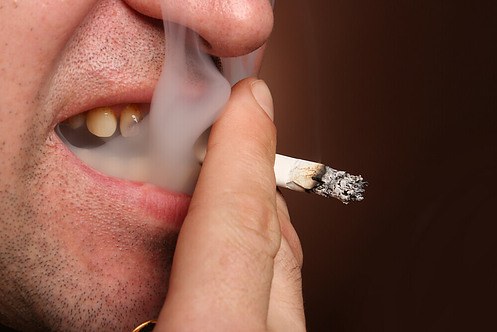
Hey there! Let me fill you in on all the details about getting a brighter smile. The facts are in…it boils down mostly to feeling super confident and taking care of your oral health. Now, you’re going to find out about some tried-and-true tips to whiten those pearly whites, and we’ll cover everything from daily habits to professional treatments.
This isn’t just a rundown of quick fixes. I’m here to help you with a comprehensive guide that will serve you well over time. Remember, the best approach to teeth whitening reflects your unique situation. Everyone’s teeth are different – the response to whitening treatments will vary, and it’s important to navigate this process with care, especially if you have sensitive teeth or existing dental issues.
In my opinion, the foundation of a radiant smile is built on the habits you maintain day in and day out. So, let’s set the stage for the next section where we’ll dive into the critical role of brushing and flossing regularly. It’s the cornerstone of not just oral health, but long-term teeth whitening success.
Choosing the Right Whitening Toothpaste: The Contents Matter
I’m here to help you with picking the best whitening toothpaste that can give your smile that extra gleam. It’s not just about the promise on the packaging; it’s the ingredients inside that count. To remove surface stains and get that bright smile, you’re going to want to look for toothpaste with hydrogen peroxide or baking soda.
Hydrogen peroxide is a gentle bleaching agent that works to lift stains from the surface of your teeth. Meanwhile, baking soda, or sodium bicarbonate, is a mild abrasive that can scrub away stains without being harsh on your enamel. This tag team can make a noticeable difference over time.
In my opinion, it’s essential to choose a product that balances stain removal with enamel protection. Some whitening toothpaste can be abrasive which might lead to sensitivity or damage if overused. Therefore, moderation is key. Choose something that resonates with you and your dental health needs, and don’t be afraid to ask your dentist for recommendations.
Also, be aware that while whitening toothpaste can help with surface stains, it may not drastically change the shade of deeply discolored teeth. For tougher stains, professional treatments might be necessary, which I’ll dive into later. But for now, integrating the right whitening toothpaste into your daily routine can be a simple yet effective leap toward a brighter smile.
Choosing the Right Whitening Toothpaste: Ingredients Matter
You’re going to find out about the ins and outs of whitening toothpaste, and it’s not just a matter of picking up any tube off the shelf. The ingredients in your toothpaste can make a real difference in tackling those pesky surface stains that dull your smile.
In my opinion, there are a few stars of the show when it comes to ingredients. Hydrogen peroxide and baking soda are two big hitters in the teeth-whitening arena. They work by gently buffing away stains and providing a deeper clean that regular toothpaste can’t match.
You might be wondering how to choose the best whitening toothpaste with so many options out there. I’m here to help you with that. Look for products that specify ‘whitening’ and check their active ingredients – reputable brands will be clear about this. It’s also a good idea to look for the American Dental Association (ADA) Seal of Acceptance to ensure product safety and effectiveness.
I hope that you find a whitening toothpaste that resonates with you. And remember, while these toothpastes are great for surface stains, they might not banish deeper discoloration. For that, you might need to try something a bit more robust – like changing your diet, which I’ll touch on next.
Dietary Choices and Their Impact On Teeth Coloration
You might not realize it, but your morning cup of coffee or glass of red wine at dinner is leaving a “lasting impression of stains” on your teeth. Foods and drinks that are high in pigment can stick to the enamel, the protective outer layer of your teeth, leading to stubborn stains over time.
This isn’t the case for coffee and wine alone; it is the same for tea, cola, and even healthy choices like berries and beets. They all have chromogens, intensely pigmented molecules that cling to enamel. That’s going to include foods with artificial colorings too. Plus, acidic foods and drinks can exacerbate the issue by eroding enamel and making it easier for stains to take hold.
But don’t worry too much about having to forego your favorite beverages and snacks; there are practical approaches to enjoying them while avoiding nasty stains. Try to limit your intake of these stain-promoting foods and drinks, and when you do indulge, rinse your mouth with water shortly afterward. Swishing water helps to wash away those pesky pigments before they can settle in.
If you’re a tea or coffee aficionado, consider drinking through a straw. It might seem unconventional, but this can significantly reduce the amount of liquid that comes into contact with your teeth. For hot beverages, sipping through a straw designed for higher temperatures can have the same protective effect.
By being mindful of these dietary habits, you can help keep your teeth brighter. However, don’t forget the importance of regular dental care to address any discoloration or staining that can occur. With that thought in mind, it is important to consider the wider impact of your diet on your teeth – not just the color. Next, we’ll explore how certain habits like smoking can affect not just the whiteness of your teeth, but their overall health too. Taking a comprehensive view of lifestyle choices ensures your smile stays vibrant for years to come.
Kicking The Habit: Smoking’s Effect On Your Teeth

Now, let’s talk about something that affects your overall health as well as your smile – smoking! Cigarettes are notorious for leaving behind nicotine stains, which cling to your dental enamel and lead to an unsightly yellow-brown hue. These stubborn stains can make even the most diligent brushing seem futile for those who wish for a bright white smile.
I think that the decision to quit smoking is a significant one that benefits not just your general health, but also improves the appearance of your teeth. If you’re serious about whitening your teeth, giving up smoking is one of the best decisions you can make.
Having made up your mind to quit smoking, you are likely to notice a substantial improvement in the whiteness of your teeth, not to mention a fresher breath and healthier gums. There are also countless support groups and smoking cessation programs that can guide you through the process. Once you’ve broken free from the grasp of tobacco, your body and dentition will thank you for it.
Your first attempt to quit doesn’t need to be your last. Many people find it challenging to quit on their first try. But each attempt is a step forward towards a brighter, healthier smile. Once you succeed, you’ll not only have a whiter smile but also the bonus of a healthier lifestyle.
Harnessing The Power Of Oil Pulling: Achieve a Brighter Whiter Smile
Have you ever considered an ancient practice to improve your oral health and whiten your teeth? I’m talking about oil pulling, a method that’s been gaining traction in the wellness community for its simplicity and effectiveness. The concept is straightforward: you swish a tablespoon of oil, typically coconut or sesame, in your mouth for 15 to 20 minutes, and then spit it out. That’s it.
Now, you’re probably wondering if there’s any truth to the claims surrounding oil pulling. Guess what? Studies have suggested that oil pulling can indeed support oral health. It works on the principle that the oil ‘pulls’ bacteria from your mouth, which can reduce plaque formation and combat the stains that dim your smile.
Moreover, oil pulling is not just about whitening. It’s also about maintaining overall oral hygiene. Coconut oil, for example, contains lauric acid, which is known for its antibacterial properties. Regular oil pulling can help fight off the bacteria responsible for tooth decay and gum disease.
If you want to give oil pulling a try, here’s how to do it properly: Choose a high-quality oil, swish it gently around your mouth and through your teeth, and, most importantly, never swallow it. Once you’re done, spit the oil into the trash to avoid plumbing issues.
You can always adjust your oil-pulling routine to fit your needs; some people find that starting with just 5 minutes a day is more comfortable, and then they gradually work their way up. In my opinion, consistency is key, so make this a part of your daily oral care regimen if you decide it’s the right fit for you.
After discussing the natural approach to whitening offered by oil pulling, we’re going to dive into another technique that’s been a part of traditional oral care practices for quite some time – using hydrogen peroxide as a mouthwash. Get ready, because this is a game changer for those seeking a brighter smile.
Extra-White Smiles: The Power Of Hydrogen Peroxide
Now onto another powerful agent in search of a bright smile: hydrogen peroxide. This household staple isn’t just for cuts and scrapes; it can work wonders on your teeth as well.
When used correctly, hydrogen peroxide acts as a mild bleaching agent. Diluting it with water and using it as a mouthwash can help to fade surface stains and bring out the natural whiteness of your teeth. I’m talking about watching those coffee, tea, and red wine stains diminish over time.
Remember, though, that while hydrogen peroxide can be your smile’s best friend, it still requires careful handling. It’s a powerful substance, so always dilute it with water and never swallow it. Stick to swishing it around your mouth for no more than a minute, then spit it out.
You might be wondering about safety, and that’s a valid concern. Using hydrogen peroxide for teeth whitening is generally safe as long as you follow the guidelines and don’t overdo it. It’s a good practice to check with your dentist to find an appropriate concentration and frequency that works for your pearly whites, especially if you have sensitive gums or teeth.
Conclusion: Embracing Individuality in Teeth Whitening

You’ve now learned practical teeth-whitening tips that can pave the way to a brighter, more dazzling smile. But, don’t forget that the journey to a pearl-like grin isn’t one-size-fits-all. Your teeth are unique, just like you, which is why results can, and often do, vary from person to person.
The dental health tips and advice I have just shared with you go beyond improving appearances; they are about embracing practices that enhance your overall oral health. Because when your teeth are healthy, they naturally look better. This is what it means to take a people-first approach to teeth whitening—focusing on both aesthetics and well-being.
It’s important to be aware of how your dental condition might affect your teeth-whitening results. Do not hesitate to reach out to your dentist for guidance before diving into new whitening methods, especially if you have concerns about tooth sensitivity or existing dental work.
Incorporate your new knowledge into a balanced oral hygiene routine tailored to your lifestyle, and remember to adjust strategies as needed. Sometimes, the best results come with time and persistence.
I hope that you find these tips helpful and that they give you the confidence to flash your best smile yet. Thanks for empowering yourself with information that not only brightens your smile but also contributes to your ongoing dental health. Remember, your smile is your signature, and with a little care, it can shine its brightest.
